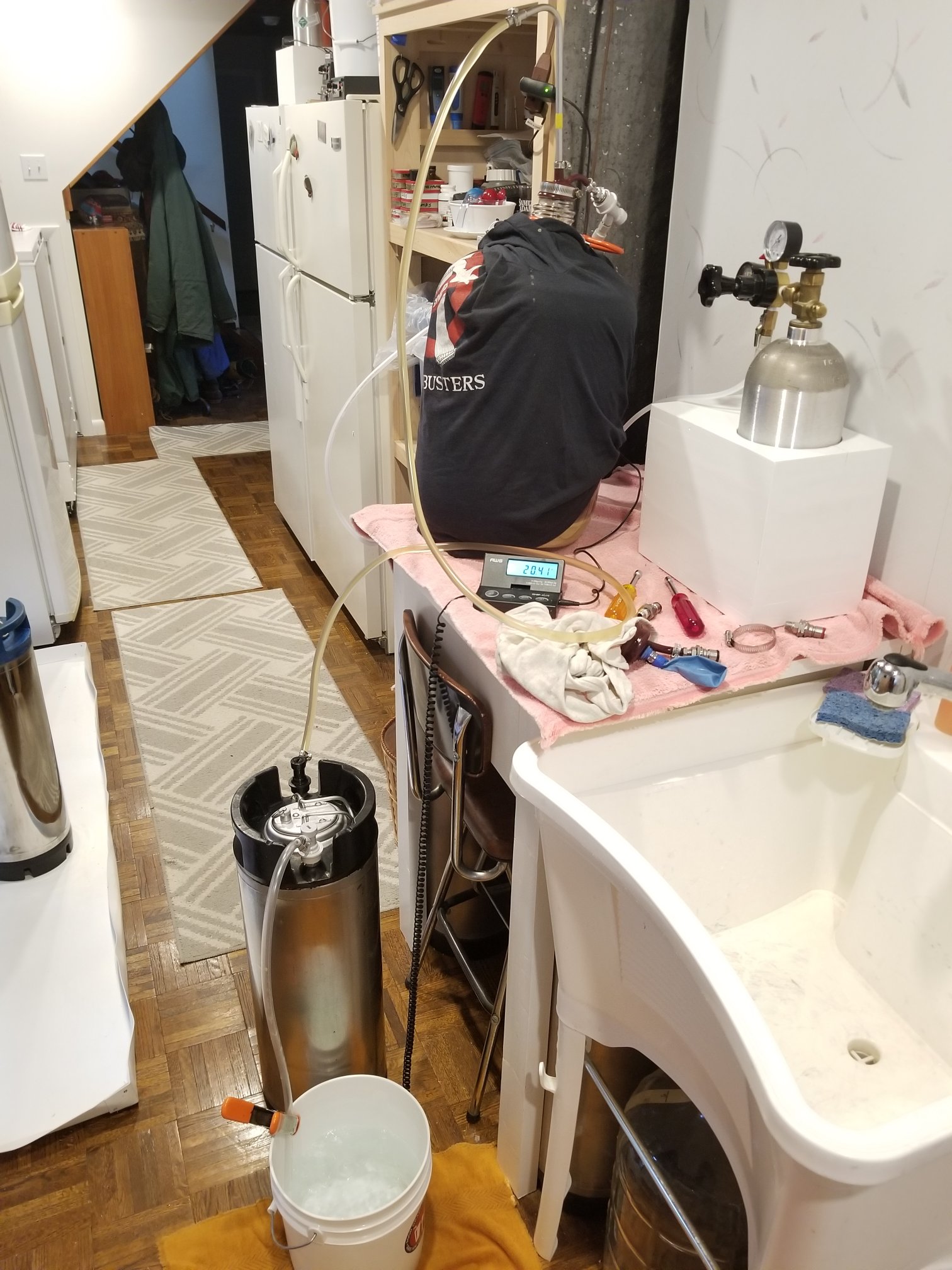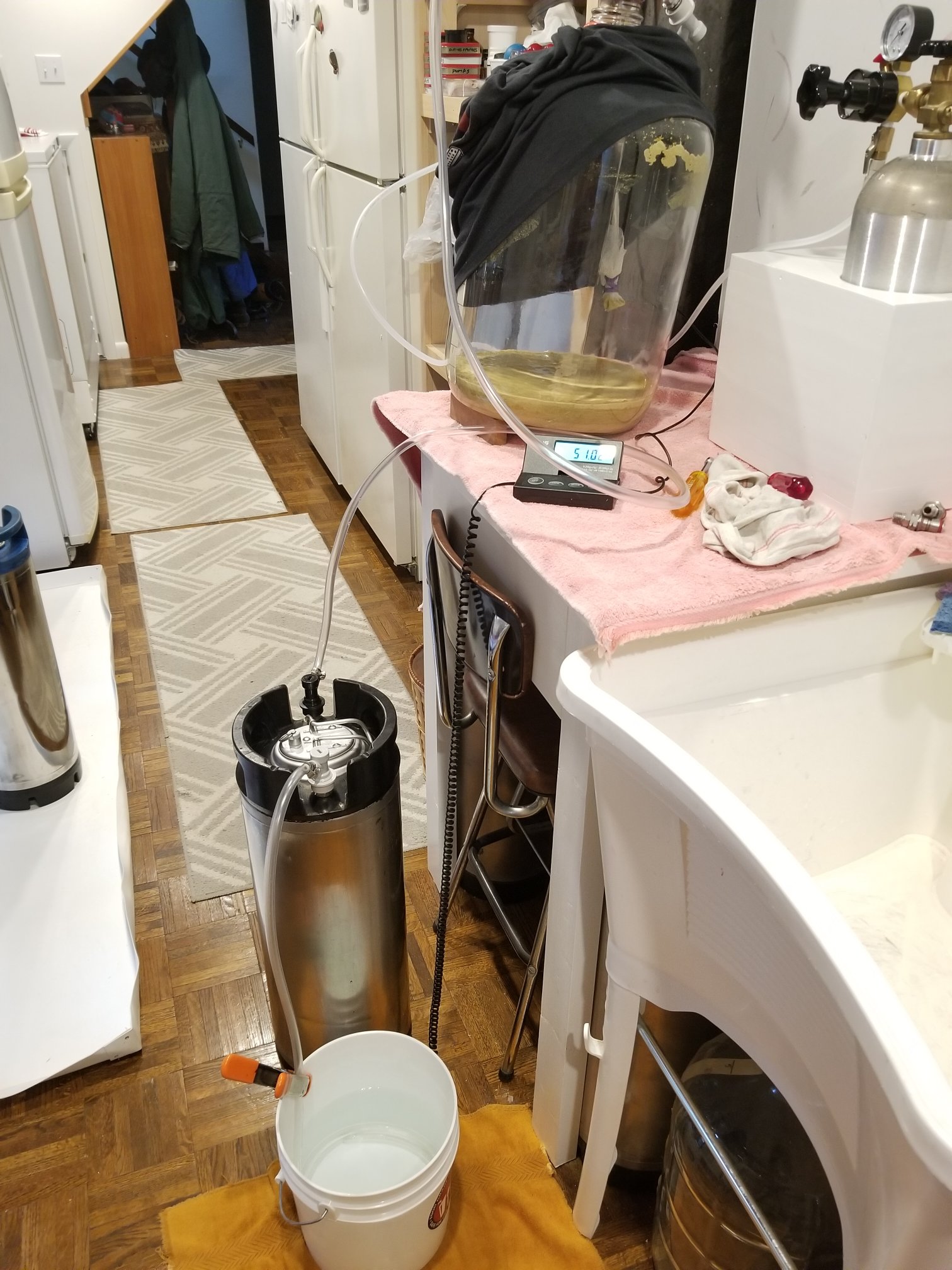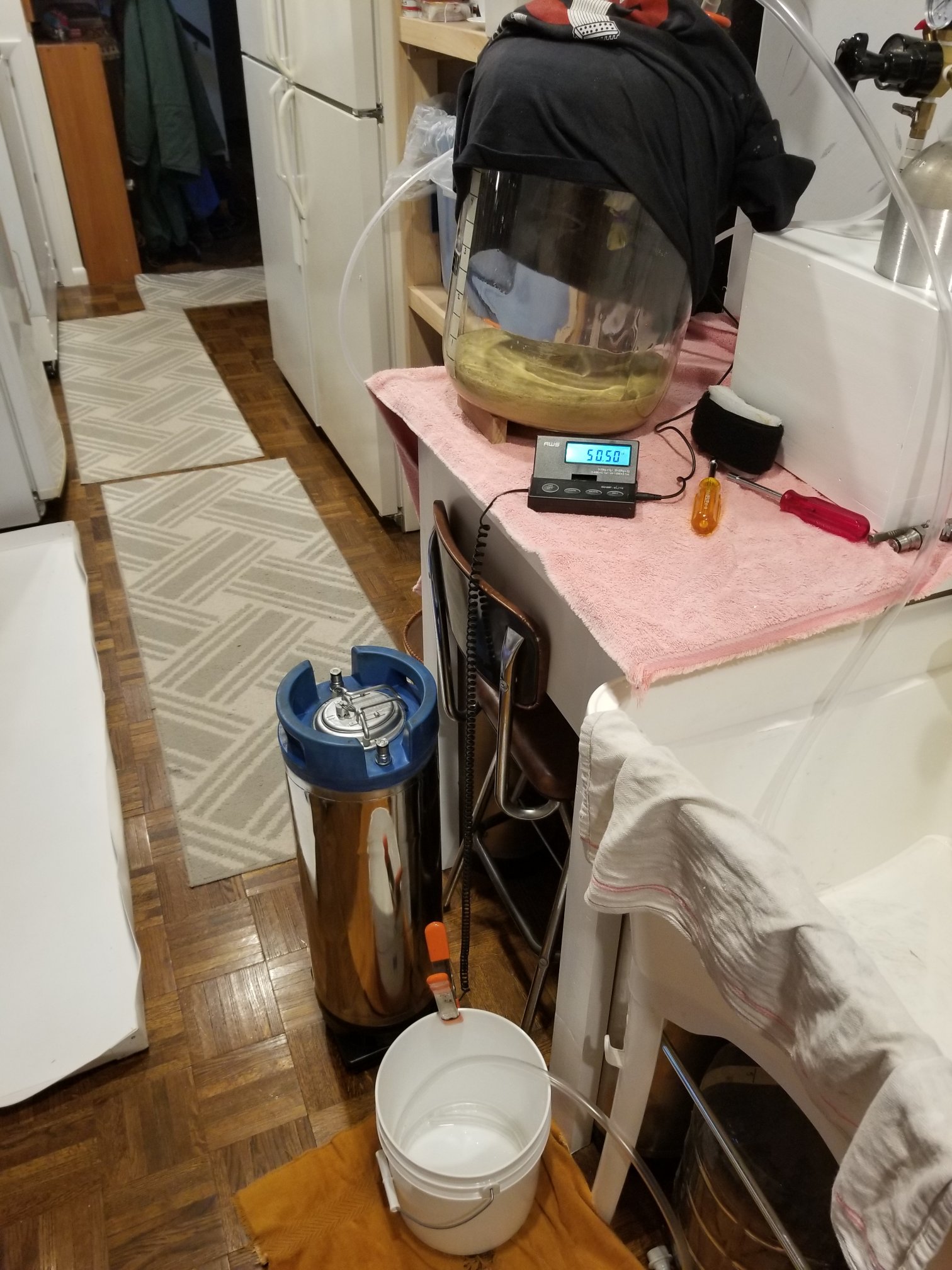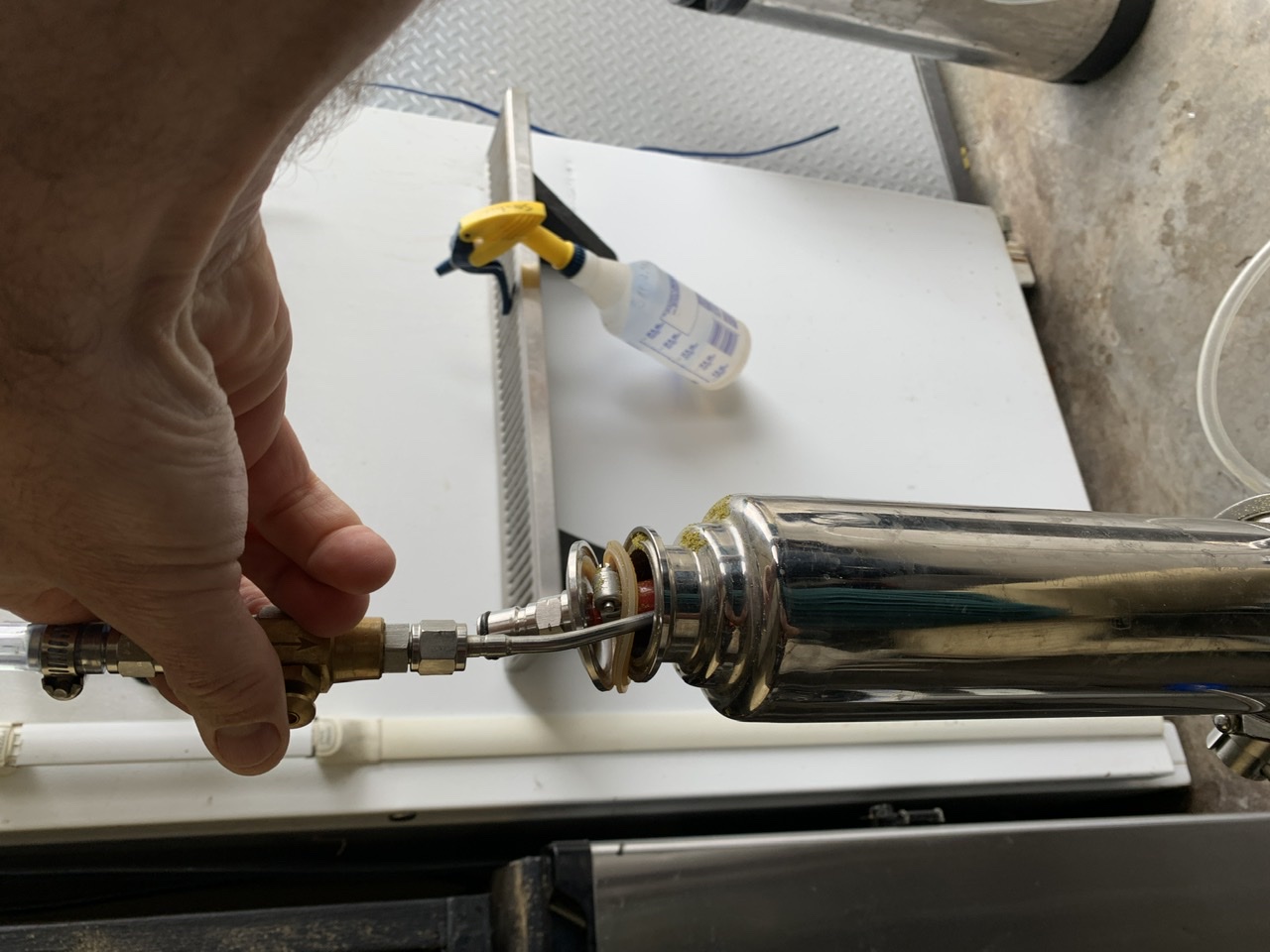Your technique doesn't purge the chamber completely either. The reason being, oxygen is a gas and it will diffuse in all directions, including into the FV's headspace, and not just flow out of the manifold. The result will be that you will have to wait for fermentation to purge all the residual oxygen from the headspace and the dry hopping chamber s well and this will most likely take longer than one day. If one want to be sure that residual oxygen levels are negligible one ought to actively purge the chamber before opening the valve, which would also allow dry hopping at a later time when active fermentation is done.
I don't do it the first day. I wait until the 3rd day, generally, before any of his happens. Meanwhile the oxygen in the headspace is either being consumed by the yeast, or being expelled by the CO2 released. Given the volume of CO2 being produced, by the third day the headspace should be clear of O2, and then I begin the process of hops in the sight glass. I'll close the butterfly valve and let the fermenter build up a bit of CO2 pressure, add the hops, top off with the manifold, and then crack the valve a bit to allow CO2 to escape through the hops.
Is it producing a perfectly oxygen-free environment? I think it's pretty good, darned good in fact, but perfect? Nah.
But it's one heck of a lot better than the old way of doing it, i.e., open up the fermenter, dump in the hops, allow a lot of air and O2 to mix in, and close back up.
********
During fermentation about 1 volume of CO2 is produced for every 2 points of gravity drop (this from the low-oxy stuff). It takes about 25 purges of a vessel with pure CO2 to get down to a virtually O2-free environment. So if it dropped in gravity from, say, 1.060 to 1.010, that's 50 points; divided by 2 is 25 volumes. So a 5-gallon batch produces about 125 gallons of CO2.
Roughly. Lower starting gravity, or higher finishing gravity reduces that somewhat.
So when that expelled CO2 goes through the much smaller volume of the sight glass and associated connections, it's purging that space pretty quickly. I haven't done the math, but even one volume of CO2 produced (5 gallons) is....well, time out while I do a little math:
Assume a 12-inch cylinder of sight glass etc. times 1.5" of diameter....lessee....pi-r-squared is the area of the circle....3.14 x .75 x .75 is ...about 1.77 square inches. Times 12" of height is
21.24 cubic inches of volume in the sight glass and associated stuff. (overestimating by a bit, but that's ok, it's the right side on which to make that error, more conservative).
There are 231 cubic inches in one gallon;
in five gallons there are 1155 cubic inches. Divide that by the 21.24 cubic inches of the sight glass, and
1-volume of CO2 from fermentation will be equivalent to....1255 / 21.24 = 59.xx. Or 59 purges. You can check the math, but I think it's right.
So if one doesn't allow air to go into the top of the fermenter while doing this, one should be able to purge the sight glass, and the hops inside, in just the few hours it takes for fermentation to drop gravity by about 2 points.
That's why I do it late--to purge the headspace of the fermenter and then allow enough remaining fermentation to purge the sight glass and hops.
******
Perfect? No. I'm sure there's O2 inside hop pellets, though not much. Probably can't get rid of that in purging, but its volume compared even to the sight glass is miniscule. But when I dump in the hop pellets and they melt in the beer, that O2 should be consumed by the yeast.
********
It's better to use the CO2 produced by fermentation, if possible, because it's pure. CO2 from a tank, unless one paid for a very high level of purity, is about 99.5 percent CO2; the rest air. In that air is 21 percent oxygen. So 21 percent of the remaining .5 percent is about .1 percent, so in one's CO2 is about .1 percent oxygen. Just trying to eliminate all the O2 I can.























![Craft A Brew - Safale S-04 Dry Yeast - Fermentis - English Ale Dry Yeast - For English and American Ales and Hard Apple Ciders - Ingredients for Home Brewing - Beer Making Supplies - [1 Pack]](https://m.media-amazon.com/images/I/41fVGNh6JfL._SL500_.jpg)












































